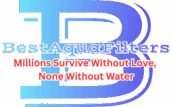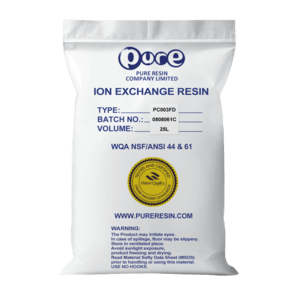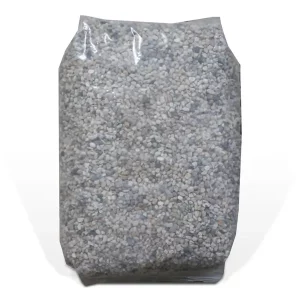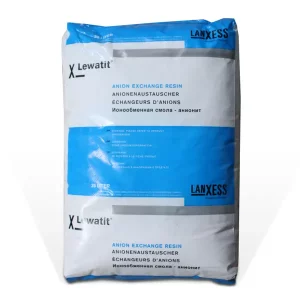About the media
Demineralizavimo užpildas – tai medžiaga, naudojama vandens valymo procesuose, ištirpusioms mineralinėms medžiagoms ir druskoms šalinti. Toks vanduo, kai iš jo yra pašalinamos druskos ir mineralai, yra vadinamas dejonizuotu arba demineralizuotu vandeniu. Dažnai dervos skirstomos į du tipus. Pirmas tipas yra katijonų mainų dervos, kurios teigiamus jonus (pvz., kalcio, magnio ir natrio) pakeičia vandenilio jonais,. Antras tipas yra anijonų mainų dervos, kurios neigiamus jonus (pvz., chlorido, sulfato ir nitrato) pakeičia hidroksido jonais. Demineralizavimo užpildas yra sudarytas iš katijonų ir anijonų. Jis veiksmingai pašalina iš vandens daugumą priemaišų. Panašų išvalymo lygmenį turi atbulinis osmosisbut it is still worse. Water passing through a demineralisation media reaches an extremely high level of purity, which is suitable for applications such as pharmaceuticals, electronics manufacturing and power generation.
Operating principle
Cationiite and anionite purify water differently. As water flows through the cation exchanger, positively charged ions (cations) such as calcium (Ca²⁺), magnesium (Mg²⁺), sodium (Na⁺) and potassium (K⁺) are attracted to the negatively charged parts of the resin and trapped. In exchange, the resin releases a corresponding amount of hydrogen ions (H⁺) into water. When water flows through anionite, negatively charged ions (anions) such as chloride (Cl-), sulphate (SO₄²-), nitrate (NO₃-) and bicarbonate (HCO₃-) are attracted to and trapped in the positively charged areas of the resin.
In exchange the resin releases a corresponding amount of hydroxide ions (OH-) into the water. The demineralisation charge is composed of both cationite and anionite. As a result, when water passes through mixed aggregates, it undergoes a series of ion exchange reactions and becomes highly demineralised. Hydrogen ions (H⁺) from the cation exchange process combine with hydroxide ions (OH-) from the anion exchange process to form pure water (H₂O), effectively removing both types of ions from the outgoing water.
Eksplotavimas
To restore the ion exchange capacity, it is necessary to rinse or replace the media. Periodic flushing of the media helps to remove trapped particles in the media and to avoid the formation of canals, which cause water to flow not through the media, but through the formation of a small canal without media. It is important to monitor the water quality to detect any reduction in performance, which will indicate when the demineralising media needs to be regenerated or replaced. The installation of simple cartridge filters with a housing can protect these cartridges from rust or mechanical impurities coming from the pipeline. As these impurities will not enter the main media, the lifetime of the demineralisation media will be extended.
Advantages and disadvantages
Demineralisation media offers a number of advantages. The main one is the extremely high level of water quality, which is essential for industries such as pharmaceuticals, electronics, dentistry, etc. In addition, demineralisation systems can be modified to meet the different capacity requirements of individual facilities. However, there are also disadvantages, for example, the installation of such a system requires monitoring of the water quality, as this is the only way to determine when the demineralisation media is becoming less effective. Also, the initial investment in a demineralisation system can be high, depending on the desired results.





Reviews
There are no reviews yet.